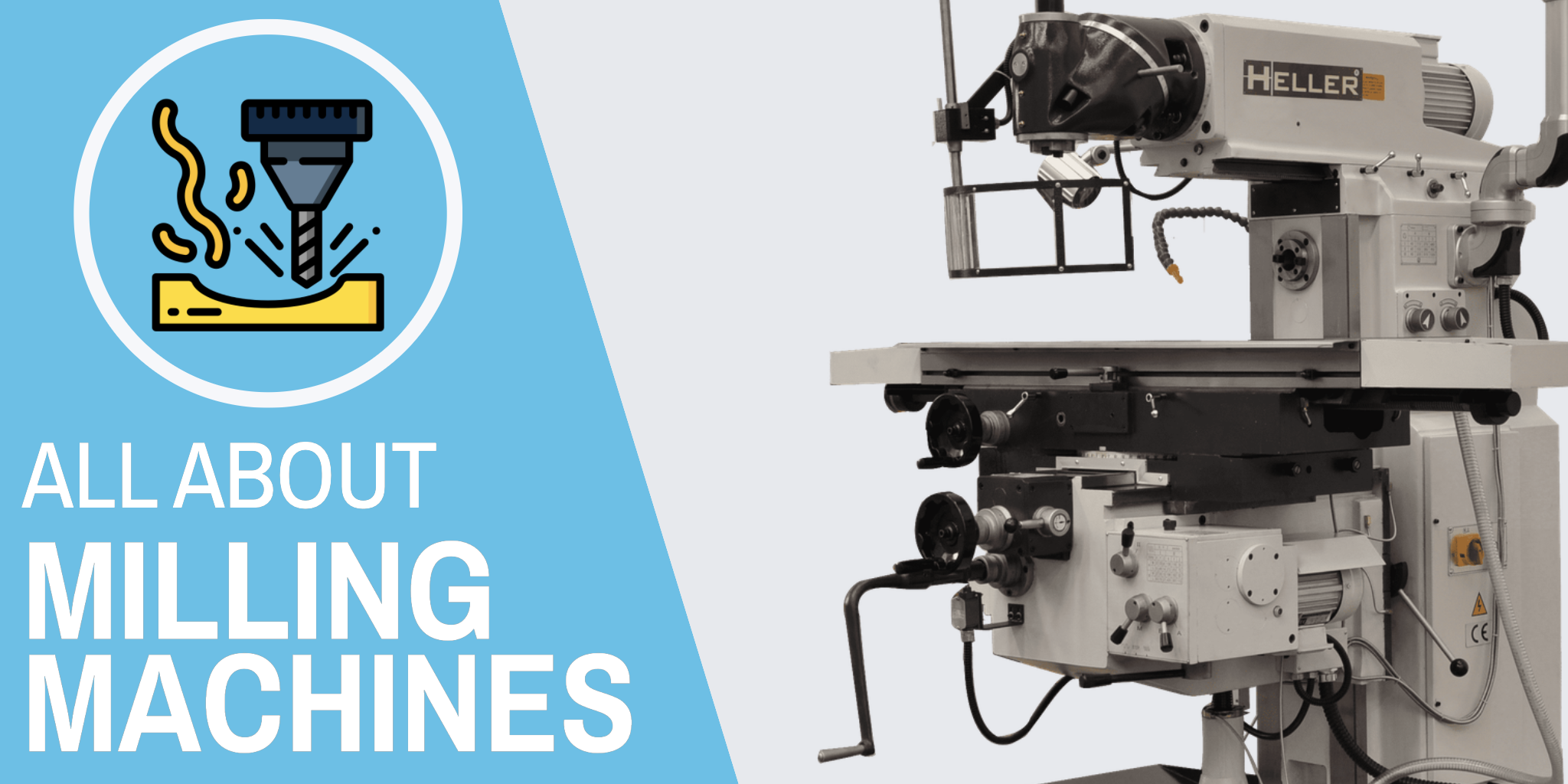🛠 The milling machine is one of the most fascinating tools for those of us who are passionate about manufacturing and machining.
In this article we talk about what milling machines are, what types exist, what they are used for, and what types of parts and operations can be done with them.
👇 Keep reading! You’ll find videos, customized images…
📖 What do you want to read?
What is a milling machine and what do we use it for?
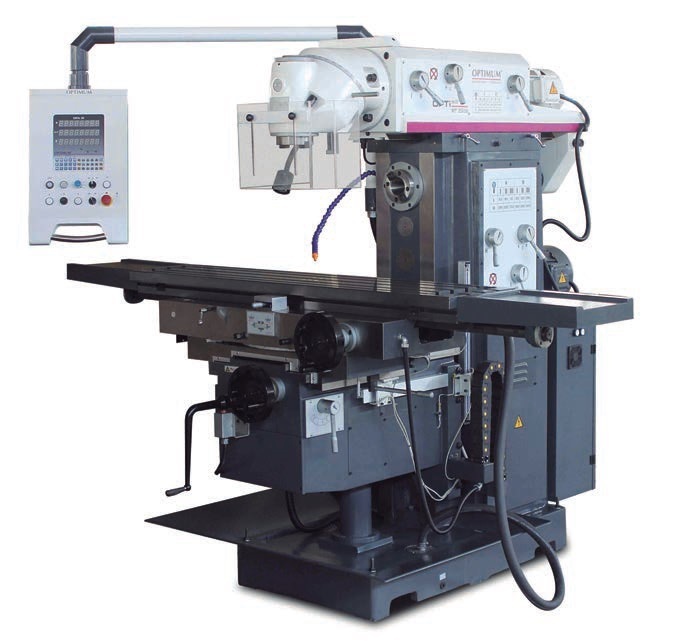
A milling machine is a machine that roughs, cuts or (even) drills different solid materials, usually metal. This is done by removing the chips through high speed rotation of the milling cutter and the movement of the axes, either of the element or the mechanism.
This type of technology for manufacturing parts by cutting them out is called machining.
The milling cutter is the cutting tool used in milling machines. A milling cutter contains one or more cutting edges that remove metal chips when the tool is rotated. There are many different types of milling cutters, depending on the type of work to be done on the part. Here are some examples:
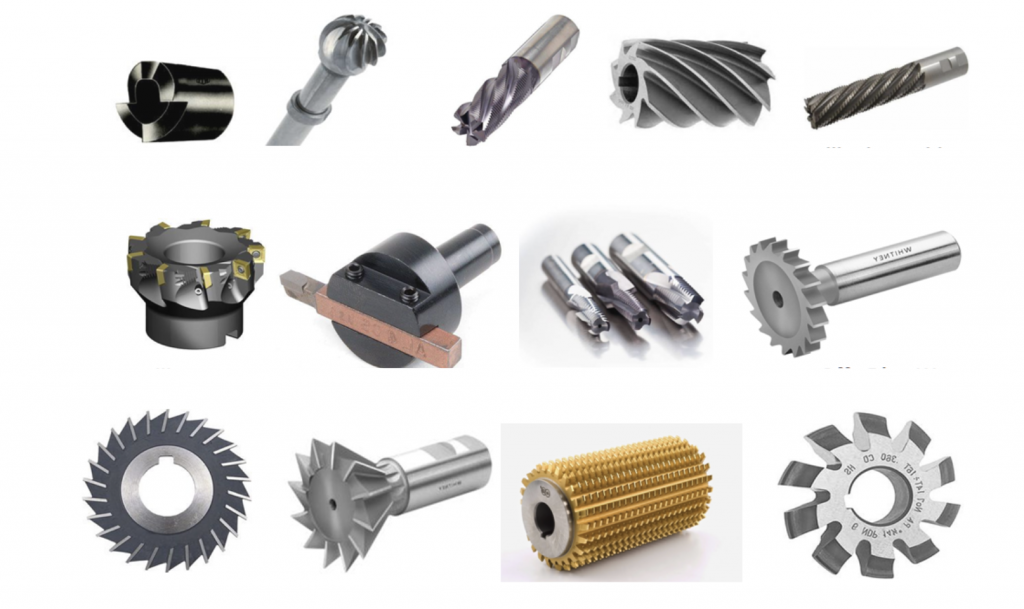
Still not clear what a milling machine is and how to use it? I think these concepts are best explained with a video. Here’s an educational video on the use of a vertical milling machine, like the ones we’re talking about in this article:
Parts of a milling machine
Now that we know what its functions are, let’s get to know the anatomy of a milling machine. To do this, we must take into account that its parts and accessories will vary according to the machine model. For that reason we will name the most important ones.
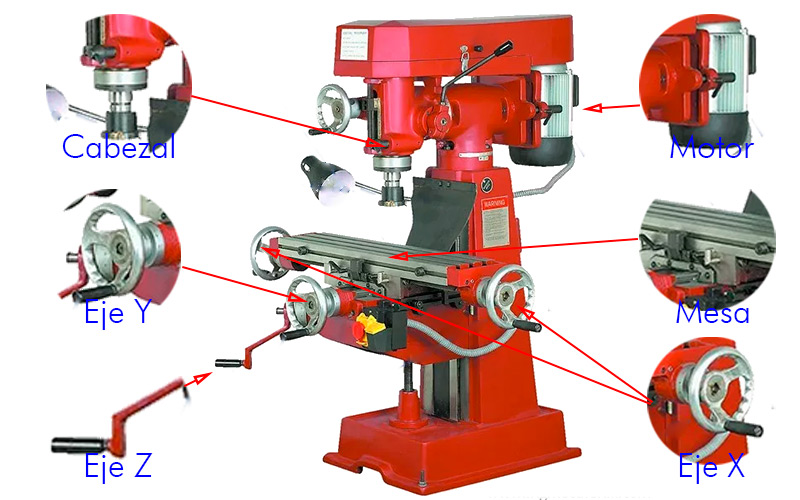
Table
It’s where we’ll place the part we need to mill. On the table, the raw metal block to be milled is fixed, using different systems. The most common system is to hold the part with a vice or with clamps, screws and T-nuts, as the part has to be strongly fixed and in the right position before starting the milling.
Cranks
They are the ones that give movement to the cartesian axes. There is one “X”, “Y” and “Z” respectively. With them we will move the component fixed on the bed and the spindle that contains the milling cutter. The milling machine can have more of these elements depending on the number of possible movements, or if we place a fourth rotation axis.
Head
It contains the device that holds and secures the cutting element. In some cases it may contain the power button and accessories such as lamps and coolant hoses. And it contains the tool axis or spindle, the rotating element on which the milling cutter is placed.
Motor
Another of the essential elements of a milling machine. It’s the heart of the machine. Its power, revolutions and torques vary according to the model and the intended use.
There are motors with variable speed control, which is done electronically, and fixed speed motors that regulate the speed and power with a system of pulleys or gears.
Gearbox
Not all materials, not all metals, are cut at the same rate. Every combination of cutter material and material to be cut requires a tool speed to give the best possible finish and to ensure that tool life is not affected.
This is why milling machines have a gearbox that takes the power output from the engine and converts it at different adjustable speeds or even in different directions (to be able to mill vertically or horizontally) or machine elements (to be able to have automatic movement on one of the axes).
What are the different types of milling machines?
As with most tools, there are different milling machines with specific functions, sizes and characteristics. They can be categorized by different criteria.
Here are some classifications of milling machines according to the characteristics that we think are most important, explained in a practical way and with pictures 👇
By the the spindle orientation
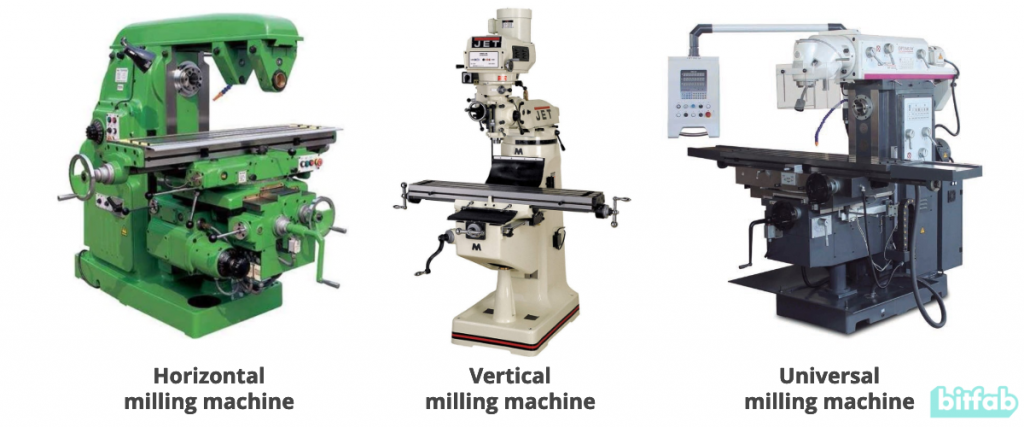
It refers to the direction of the cutting tool. In traditional milling machines it does so in one position only which can be the following:
- Horizontal milling machine. The spindle axis is horizontal, the milling cutters are mounted on a horizontal shaft called the arbor.
These machines are the first milling machine designs. They have a horizontal spindle, a bridge that supports the arbor in a very rigid position and a coordinate table that moves up and down on the console (vertical axis). - Vertical milling machine. Here, the position on the spindle is vertical, perpendicular to the coordinate table. It can have a swivel head, if it is possible to tilt the spindle to perform certain operations at an angle.
Vertical milling machines are more common today, and they are the standard when it comes to millers and CNC centers. On older models, the part usually moves up and down (the same as on horizontal ones), but on most modern millers, the head is the one that goes up and down to machine the part. - Universal milling machine. This machine combines the two previous types and has the possibility of using the tool horizontally and vertically.
Depending on the number of axes
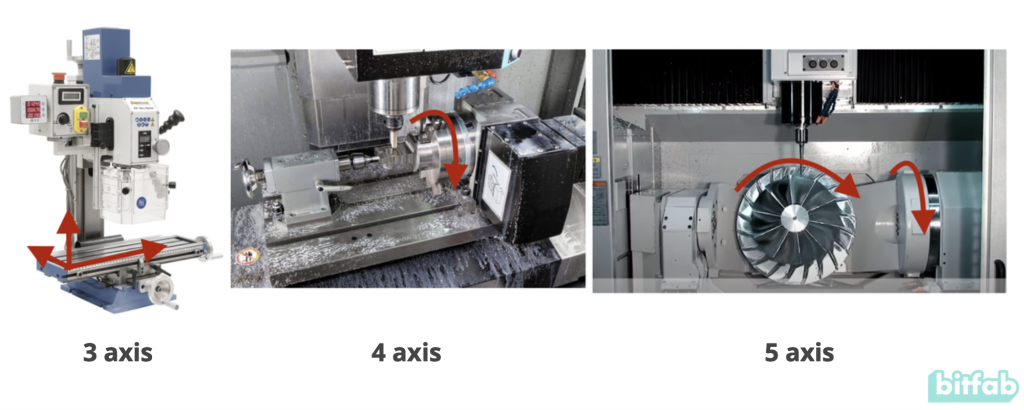
They will define the types of movement our milling machine will have. The greater the number of axes, the greater the machining possibilities, as well as the cost of the machine and the complexity of programming the operations:
- 3 axis. These are the essential orthogonal directions of a machine of these characteristics. They represent the X, Y, Z axes, in order to machine in the 3 dimensions of space.
- 4 axis. It adds to those mentioned the possibility of rotating the object to be machined on the table. The 4 side faces may be milled or a tool may also be placed to fix 4 parts instead of only one in each cycle.
- 5 axis. Add to the 3 typical axes a table capable of rotating in 2 different axes. This allows the part to be tilted for milling on all sides except one, minimizing the different grips and allowing the cutter to access many nooks and crannies in the part. Generally, 5-axis milling is done on machining centres, which we will discuss later.
According to their structure
Structure of a conventional milling machine
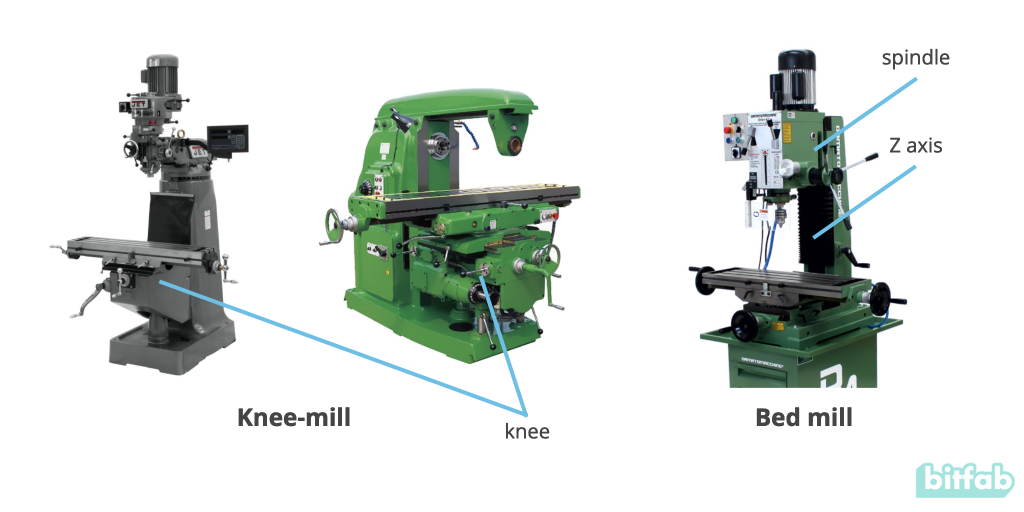
Conventional milling machines have a C-shaped structure on which the machine elements are distributed. The most important feature of the milling machine structure is rigidity, to withstand the milling forces without deformation and to maintain the tolerances of the workpiece.
Classic vertical or horizontal milling machines (knee mills) usually have a coordinate table (X and Y) that moves up and down the Z axis on a rigid support called a console. Most modern millers and vertical machining centers usually have a stationary X and Y axis and it is the head (not the part) that moves up and down on independent guides (bed mills). Both share a similar C structure.
The structures that support the forces of a milling machine are usually made of cast iron to obtain very heavy and rigid parts that maintain the shape of the milling machine and absorb vibrations. There are also welded steel frames, which are generally less rigid.
Movable bridge or gantry
In this case, it is not the table that moves and consequently not the workpiece either. What does move is the structure that holds the head. They are usually very large and used on flat objects that are difficult to handle.
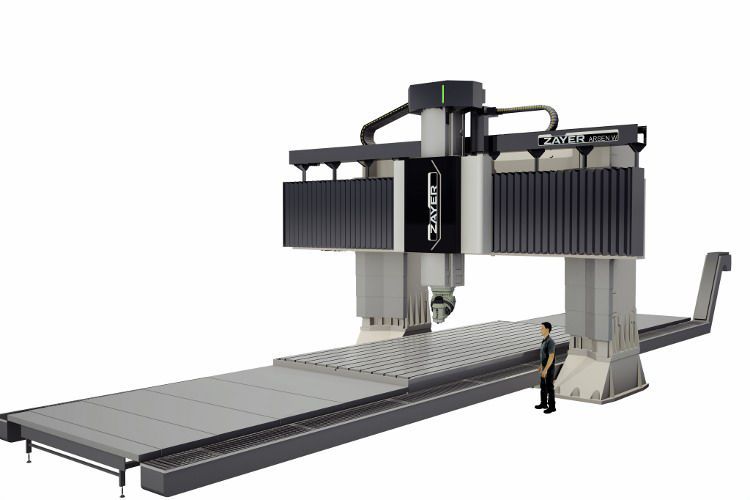
Column Milling Machine
In them the spindle is placed in a vertical column, through which it moves up and down and from which it comes out and enters through an arm. This design is used when the parts are large or heavy, as it is the machine that moves around the part to machine it and the movements are minimised. Boring machines, which are specialised in machining holes with very precise tolerances, are usually fixed or mobile column machines.
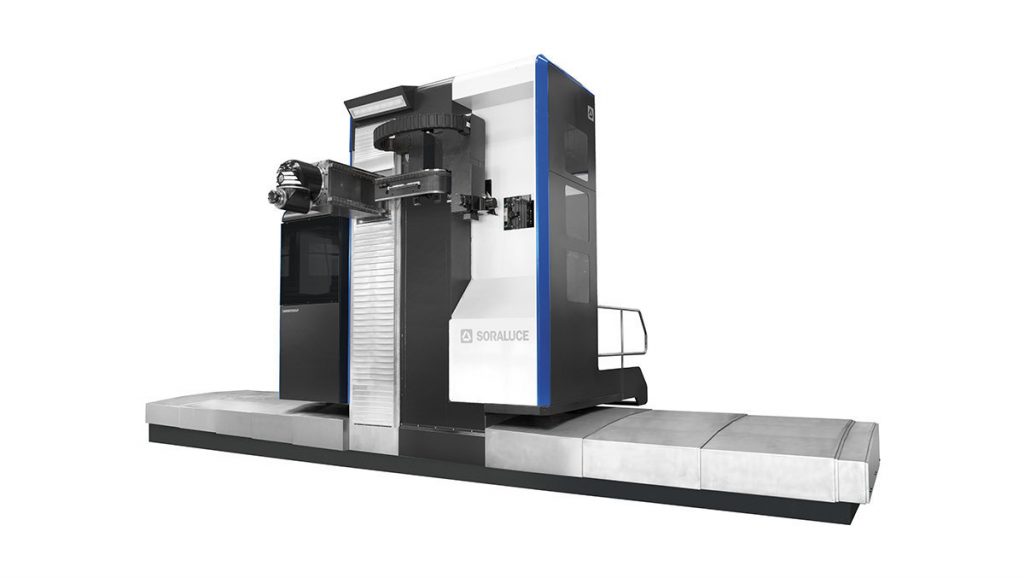
According to the control method
Manual Milling Machines
The most basic milling machines use cranks with vernier (scales to see the feed) so that the operator can move the axes when turning them. Some milling machines also include automatic feed on one of their shafts, the operator can engage a shaft to move it automatically and finish the operation without having to move the crank.
Milling machine with DRO (Digital Read Out)
One of the most common accessories to a manual machine is the DRO. The reader indicates the position of the axes on a screen so it is not necessary to use the vernier cranks or take more measurements than necessary.
In short, the control is still manual but you have the help of the reader to guide you.
A DRO can be purchased directly installed on the milling machine or it can be installed later in a relatively simple modification. Here is a video on how to use and install a DRO in a milling machine:
CNC Milling Machines (Computer Numerical Control)
This type of machine is fully digitally controlled. It is ideal for automating manufacturing processes. The cutting and milling operations are previously designed on the computer in a CAM software and transmitted to the machine in the GCODE format.
These milling machines can be purchased with numerical control or can be modified to a manual milling machine so that it can be controlled by CNC. Here is one example of how to convert a milling machine to CNC control:
Milling machines for hobbyists and small workshops
We have talked about industrial machines, with prices in the order of several tens of thousands of euros. Do you know that there are cheaper models for small workshops and for training?
We have gathered some reviews of the cheaper models and types that exist so that you can get an idea of the options that exist beyond industrial milling machines.
Tormach
Tormach milling machines are considerably more expensive and are very popular in the USA as starter machines or for small workshops.
Grizzly milling machines
CNC Routers
Just as we have talked about top-of-the-range huge gantry milling machines for milling very large parts, this type of design is also used in machines for hobbyists, known as CNC routers.
They do not have the rigidity of a conventional milling machine with a cast iron frame, so they are often used to mill wood, plastics, carbon fibre or aluminium. Due to their large X and Y dimensions and reduced Z travels, they are mainly used for machining simple plates or flat parts. They are always numerically controlled.
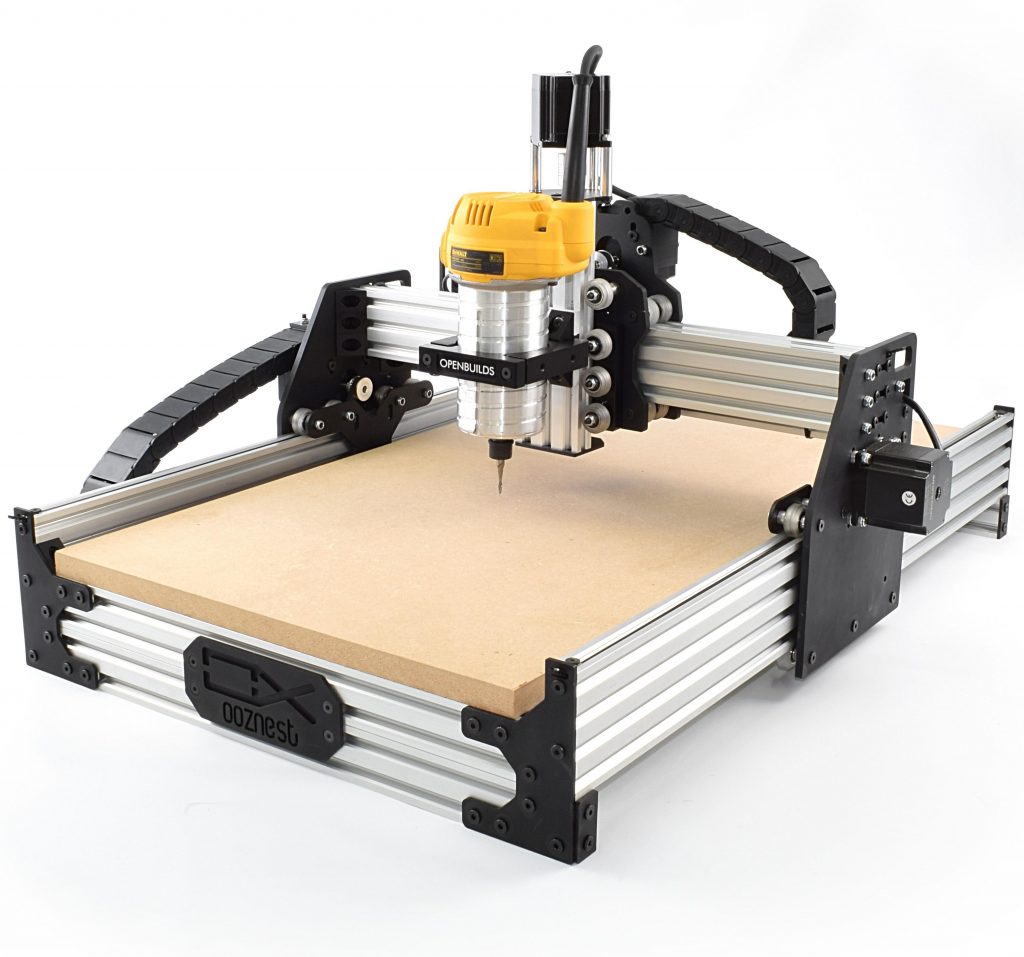
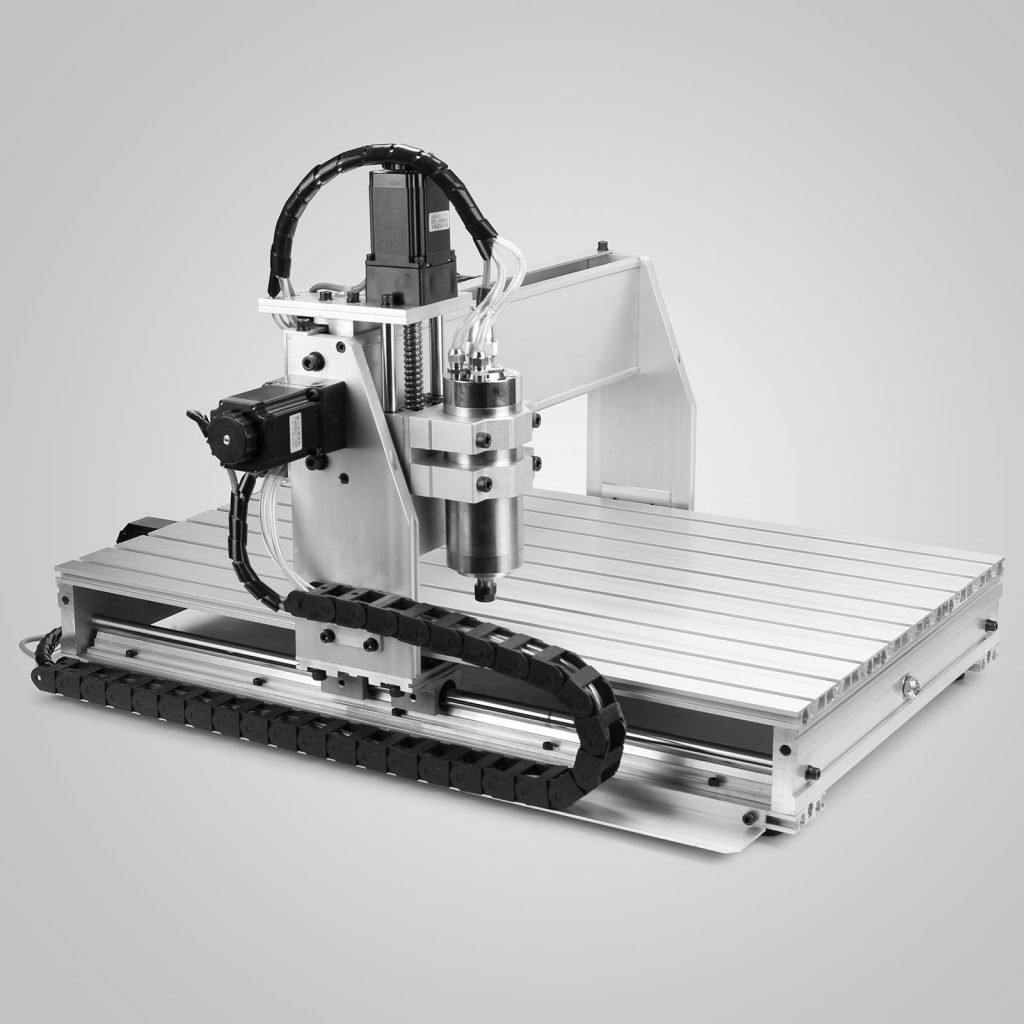
What applications does a milling machine have?
What is a milling machine used for? Milling machines are used to manufacture machined parts, which are usually made of metal (steel, aluminium or other metals), although they can also be made of plastic or wood.
Parts that are manufactured by machining can be single parts, short or medium series; for industrial applications, machinery, aerospace, medical industry… They are also manufactured by machining or parts are machined for mass production, for example, in the automotive industry.
The milling machines that we have presented in this article are mostly open milling machines, 3 axis, manual, with digital reading… This type of traditional milling machines are used for small series or single parts, they allow working fast and the manual or automatic control of the machine. They are usually used in small workshops, in tooling or prototype workshops, in machining schools, mechanic’s shops…
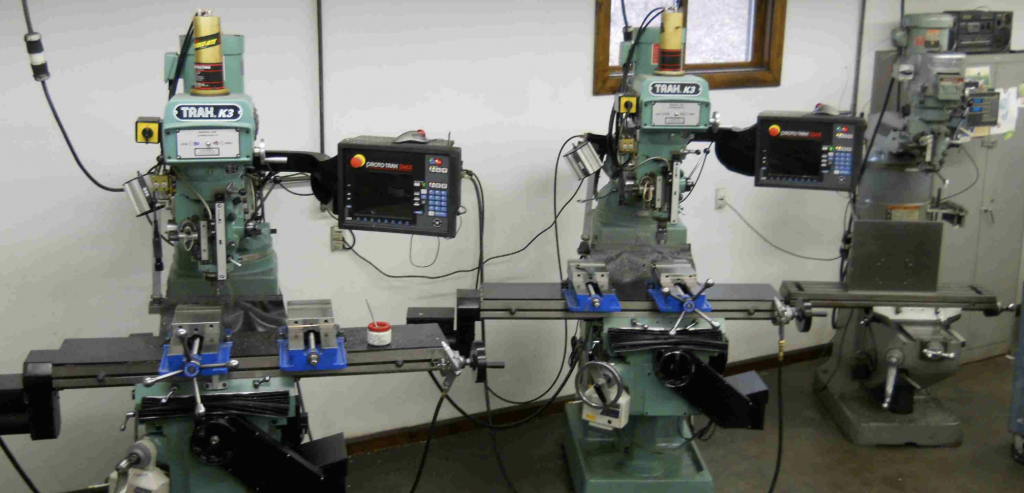
For production runs in large workshops, CNC machining centres are often used, which are machines that are essentially a milling machine, but closed and computer-controlled (CNC), and generally have automatic tool change and often more than 3 axes.

Parts with more complex geometries are produced on 5-axis machining centres, which allow the part to be rotated in two axes of rotation so that the milling cutter can access all sides of the object (except that of the grip) and mill at any angle.
Milling operations
The functions of this device are very diverse and will depend on the characteristics of each machine. However, we can name the main ones.
- Planing.
- Grooving. To make precise cavities in some material. They can be straight, or shaped. They will have a thickness determined by the milling cutter and a path delimited by the movement of the axes.
- Drilling. The versatility of the milling machine allows it to make holes of precise diameters and lengths. The first is usually given by the size of the milling cutter used. These holes can be smooth, conical or with a screw.
- Gear manufacturing. One of the main uses of a four-axis milling machine with a helical function is to make crowns, gears, cams, pinions and all kinds of transmission parts.
How does a milling machine differ from a lathe?
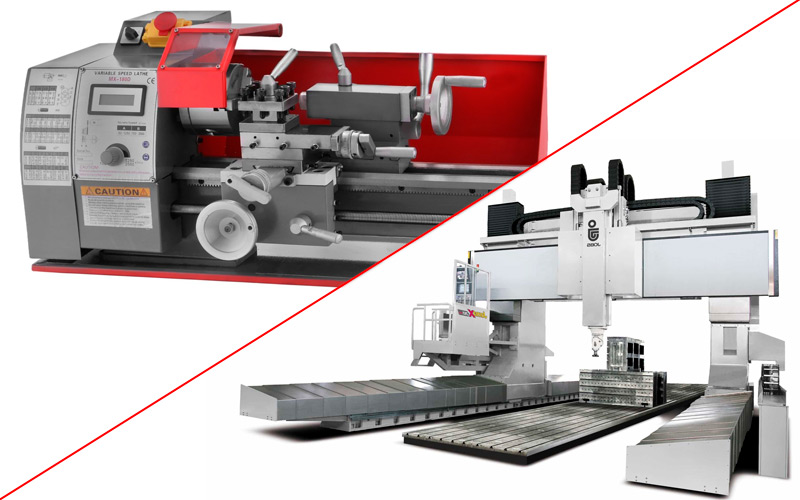
The lathe and the milling machine are the two pillars of machining, but they have completely different uses and characteristics.
The lathe is used to create revolving parts. That is, parts that can be created by turning a metal cylinder and removing metal with lathing tools.
The lathe came into being before the milling machine, and can be used to produce cheaper parts when they have the proper shape and can be adapted to the machine. Some parts can only be produced on a lathe, such as screws, spindles, shafts… On the other hand, the lathe is a less versatile machine, as a milling machine allows a greater variety of geometries and different parts to be created.
Here is a video with more information about the lathe if you are curious about this machine tool:
What is a machining center?
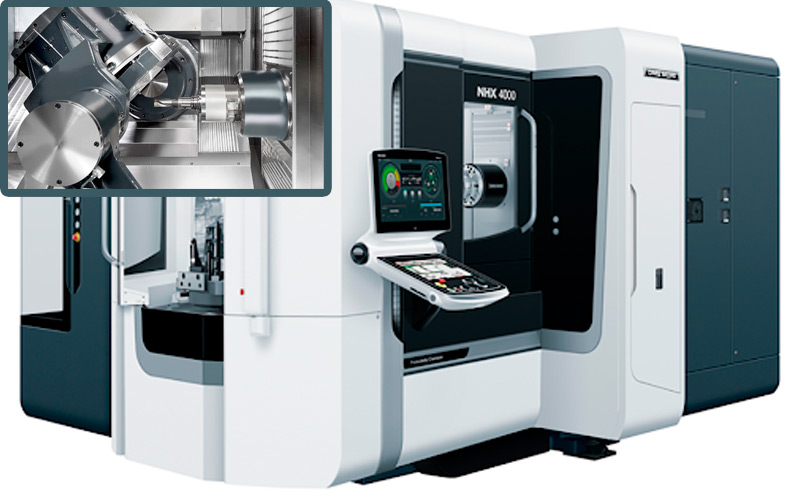
Machining centres are machines that share many characteristics with milling machines. In fact, it could be said that they are a sub-group of milling machines but they have been modernized to produce machined parts in large volumes and with high precision.
Machining centres have the following characteristics:
- They have numerical control (CNC)
- They can perform different machining operations, in addition to milling, threading and drilling
- They have a cover that closes them
- They have automatic tool change
- They can have more than 3 axes
As with milling machines, there are vertical and horizontal machining centres, although the distinction is not as simple as with milling machines.
Nowadays, milling machines are usually used in small workshops and for the manufacture of prototypes, single parts, large parts… CNC machining centres are the ones that carry most of the manufacturing load on CNC parts.
Do you want to manufacture parts by machining?
In Bitfab we can help you with your machining projects.
If you have come to this article looking for more information about machining and you think it is the right choice for your manufacturing needs, do not hesitate to leave us a contact message.

